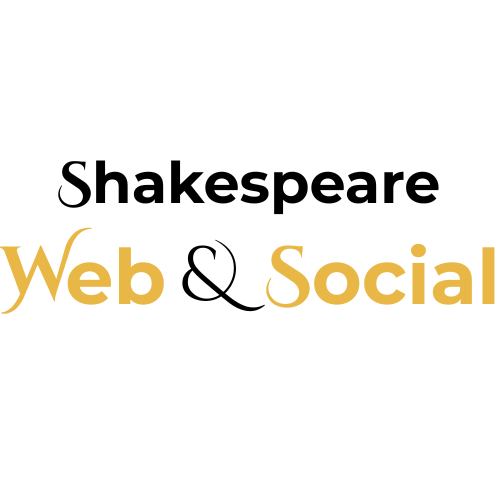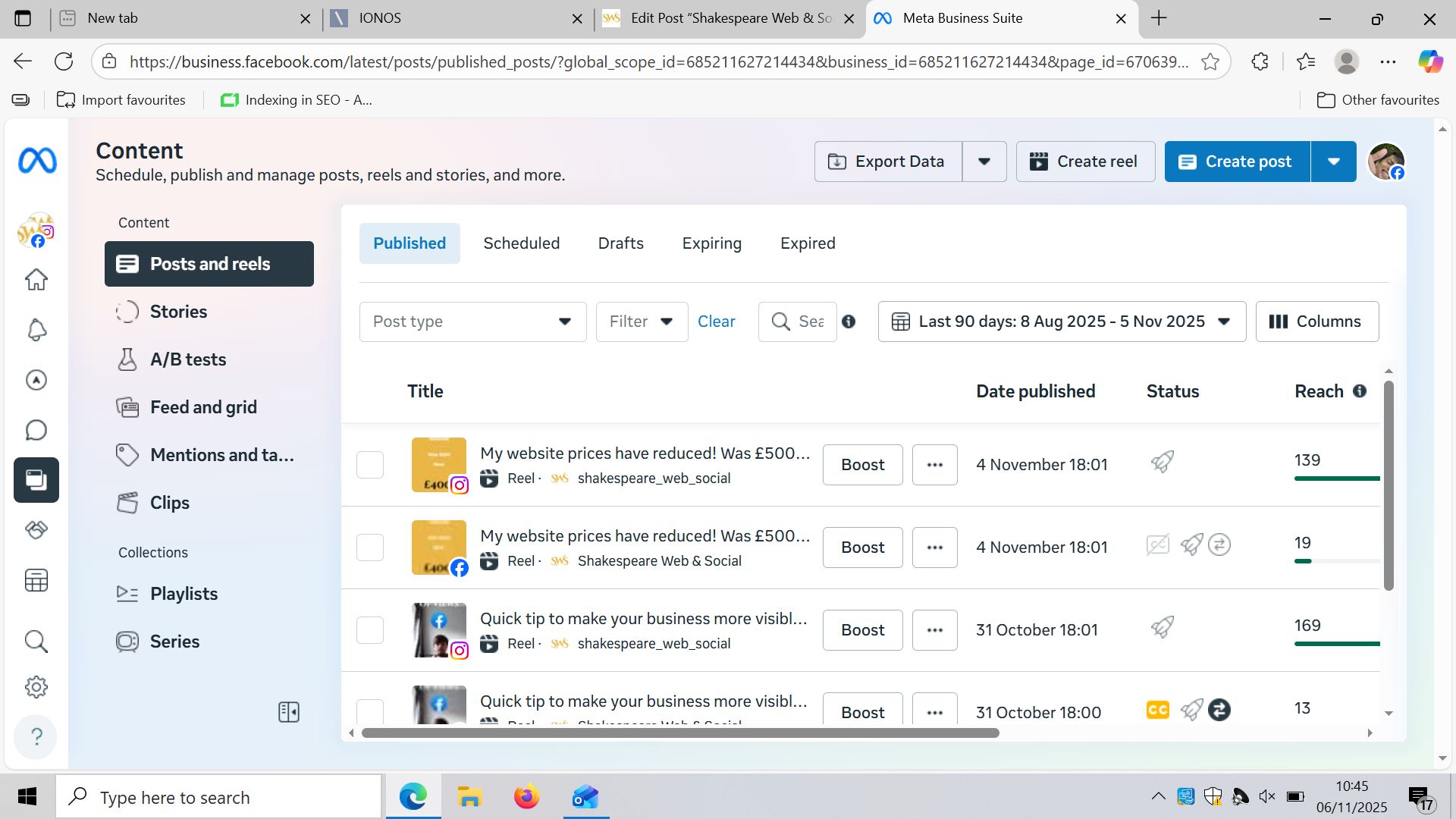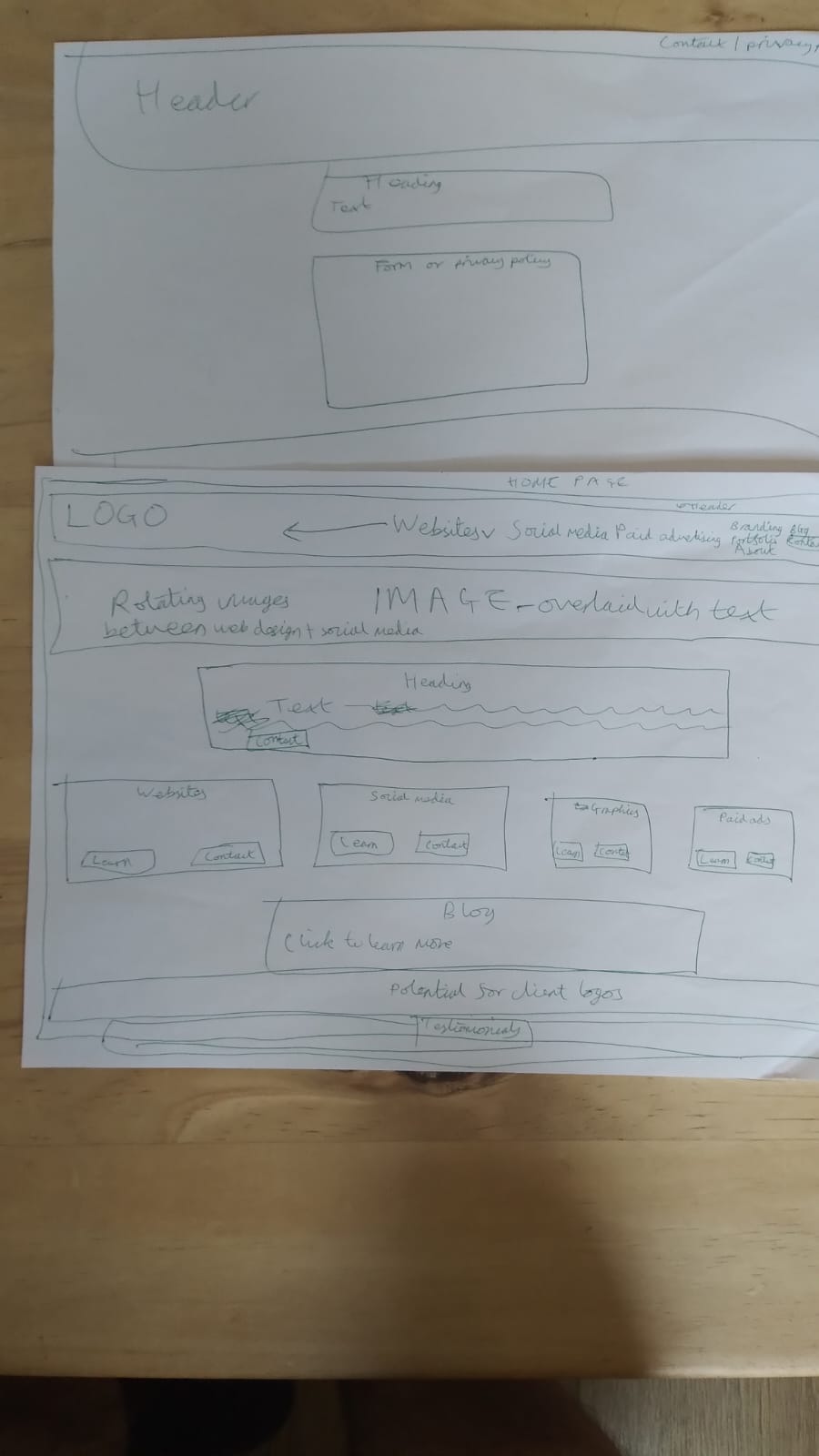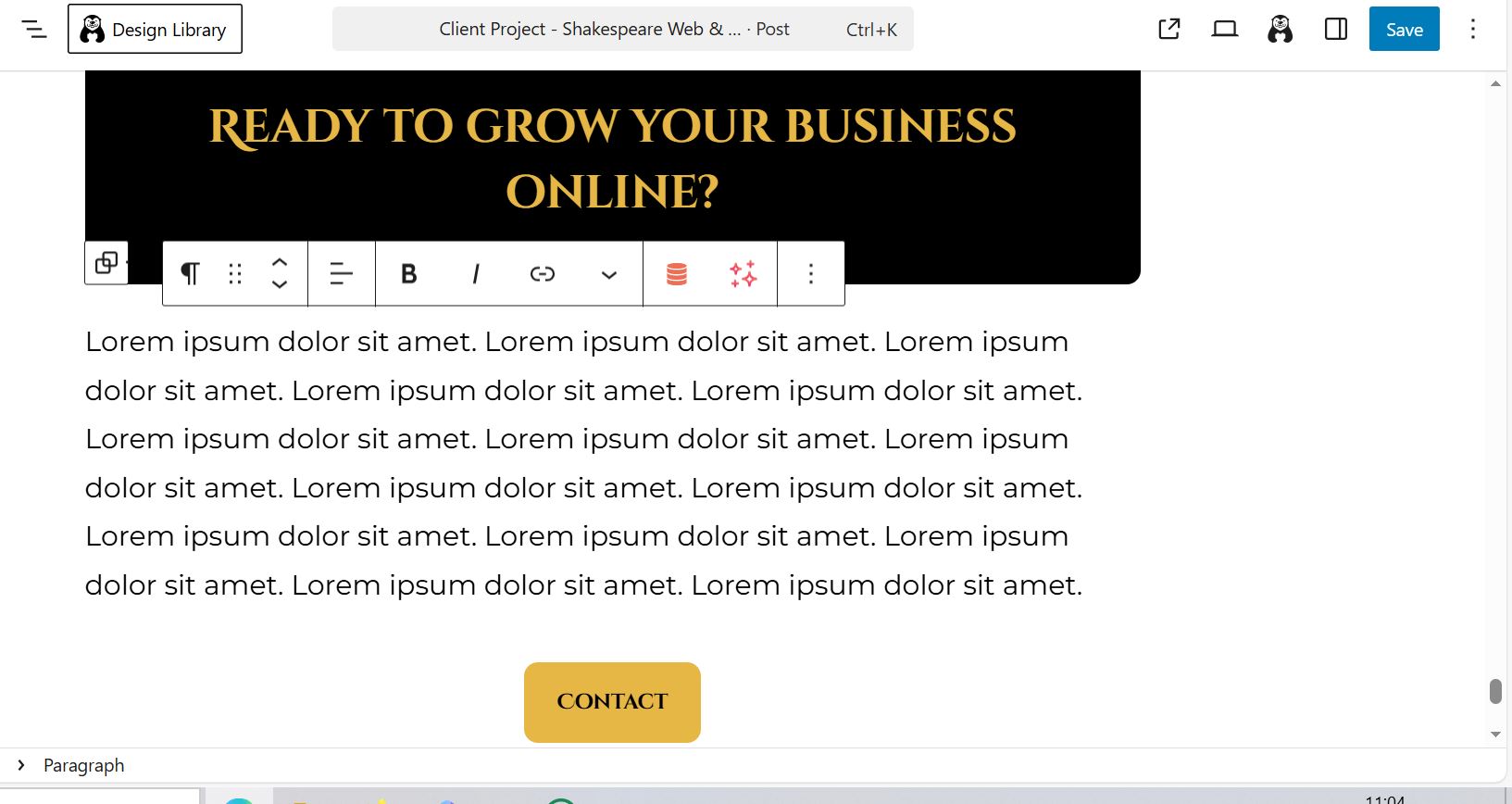Client Project – Shakespeare Web & Social

Not strictly speaking a client project, but I still manage my own website and social media! This article is going to show you how I designed my logo, built my website, and maintained my social media channels!



Our target audience and what we needed
Our mission at Shakespeare Web & Social is to empower small and local businesses with an online presence, so the logo, the website, and the social media all needed to reflect this.
Our target audience (as mentioned) are small business owners – but this is a very diverse group of people, including tradespeople, shop owners and local service providers. Because of this, our brand had to strike a balance, being professional, approachable, and adaptable across different industries.
Throughout this project, we focused on themes that small business owners relate to, such as having little time, professionalism, reaching more people, and increasing profit. Every design choice, every piece of content, and the overall message was built around these ideas to make the brand feel relevant and valuable to them.
Logo design
This had to be the first step in the project – our website and social media would not be professional without this!
We wanted a brand identity that reflected our values – modern design, with classic elegance. We wanted to show that our websites and social media strategies were both functional and beautiful – this was to appeal to small business owners that are looking for the best.
Colours
Our colour palette reflects these values perfectly:
- Gold (#E7B746 specifically) for a touch of sophistication and elegance.
- Pure white and pure black, reflecting simplicity, clean design, and professionalism.
Fonts
Our fonts follow the same logic. We use two fonts:
- Cinzel Decorative for headings and key text – elegant and distinctly Shakespearean
- Montserrat for body text – clean, simple, and highly readable.
These brand choices create the balance of professionalism, refinement, and simplicity – exactly what we aim to deliver for each client!
Bringing the logo together
Then, we brought all of this together in our full logo. We chose a simple wordmark to appeal to the simplicity and functionality that small business owners all looking for!

The main text is in black and in Montserrat so it reads cleanly and shows our professionalism. The “Web” and “Social” are in gold to highlight and make clear exactly what we do, while the initials are in Cinzel Decorative to add that elegant touch to our logo and our branding.
Finally, we made a shortened version of the logo that is suitable for favicons and social media.

The simplicity of this version comes from “SWS”, and is in gold and Cinzel Decorative to keep that elegance that the full version has.
Website design
After the logo was done, I started work on the website and the social media – this section covers the website.
As mentioned earlier, this website needed to appeal to the diverse range of small business owners. It also needed to showcase that I was an expert so that small businesses can trust me. On top of this, it needed to be functional, and look clean and beautiful! We followed the same steps that we take with client websites – first we research and plan, then make the layout, then produce the content, and then finally we test.
Step 1: Research and planning
Before touching WordPress or writing any code, we carried out research to identify keywords that our target audience (small business owners) search for where we should appear, such as:
- Web designer
- Social media management
- Logo designer
- Content creator
I also wanted to localise my business, so Skipton is also included in this list. This keyword research meant that we could appear higher in search engines, and would appeal to our visitors.
We also evaluated different hosting providers – one that was cheap, offered strong perfomance, and was secure. In the end, we chose IONOS, since they are cheap and very well regarded at the same time.
The final stage of planning was to decide what pages we need on the website. Here is what we came up with:
- Home – make a good first impression and immediately communicate who we are and what we do.
- Service pages – this was 4 pages: websites, social media, graphics, and paid ads, and this was to break down what we offer, and how our pricing works.
- About page – introduces our story and our mission.
- Blog – this was to share helpful tips and insights with our target audience, while boosting search engine optimisation (SEO).
- Portfolio – showcasing our client work and the results.
- Contact – making it easy for visitors to get in touch.
- Privacy Policy – legally required for GDPR.
Each page was for a specific purpose, with nothing extra, or nothing missing.
Step 2: Layout design
Once the website structure was complete, we moved on to layout design. The first thing we did was the high-tech method of scribbling some rough layouts on some pieces of paper!

After this, we selected a WordPress theme that was similar to what we came up with and was flexible as well – choosing Catch FSE. We used the WordPress Full Site Editor to build a flexible and responsive layout for our site and we ensured there was visual balance and good spacing between each element.
The design follows our brand identity, and ensures that visitors can easily find information – while keeping each page consistent and professional.

Step 3: Content creation
After the layout was complete, it was time to replace all the Lorem Ipsum placeholder text!
On each page, we kept the tone easy to understand yet professional and confident at the same time. We needed to explain clearly what we did, and clearly show what the benefits are to having a strong online presence. The copy also featured the keywords that were found during the research stage, keeping the site both human and search engine friendly!
We also took photographs that we uploaded on to each page – these were visually striking and complemented the text well!
Step 4: Testing and launch
Before going live, we tested each page. Some of the tests include:
- Making sure all the links worked
- Ensuring it worked on all screen sizes (especially mobile)
- Keeping the website fast
- Checking for spelling and grammar errors
Once we were happy, the site went live! At time of writing, we have just launched and are still testing just to remove all errors and ensure a flawless experience!
Step 5: Continual maintenance
The job is never done – we still update the blog, add new portfolio pages for each new client, find new keywords and fix bugs! This ensure that the website stays relevant, functional, and user-friendly!
Social media strategy
Like the logo and the website, the most important element of the social media was appealing to our target audience of small business owners. We also set the following goals for using social media: increase our brand awareness, bring in more clients, demonstrate our value, and position ourselves as experts in our industry.
Choosing the platforms
We chose the following platforms to post on:
- Facebook – wide user base, including many small business owners
- Instagram – similar reasons to Facebook
- LinkedIn – to give our brand a professional presence
- YouTube – similar reasons to Facebook and Instagram, and helps with SEO, since YouTube is owned by Google
We avoided TikTok, since the people on the platform tend to be younger and our brand does not fit in to its humorous style.
Posting strategy
For Facebook and Instagram we adopted a cross-posting strategy. In the early days, while the website was being built and the strategy still forming, we did not post on a Facebook group, since we were not ready to fully lean in to localisation.
Instagram quickly became our strongest platform – it had the widest reach and brought in the most leads. We posted 2 Reels a week on each platform and 3 stories, and we shared a mix of content – from helpful tips to polls for engagement to images of the work we were doing for our clients.
We adapted differently to LinkedIn – we post once a week and take one idea from the other content we’ve posted on Instagram, and make it more professional to suit LinkedIn’s user base.
The final platform is YouTube. Initially, we attempted full length YouTube videos, but we found that they were not getting many views, so we shifted to focusing on YouTube Shorts. Eventually, when we have a large engaged audience, we will return to posting full-length videos as well as Shorts.

Optimisation and results
Each post was carefully optimised for best results – for example, we made sure that we were including calls-to-action in our posts, and we also included strategic hashtags for SEO purposes.
We are still early on in this strategy, but already we are seeing results:
- We gain more leads through social media
- We are building brand awareness
- We are demonstrating our value
Our goals are being met, so by continuing to post consistently, our reach and engagement will only keep growing.
Ready to grow your business online?
Throughout this project, we’ve demonstrated exactly what we offer to our clients – professional branding, a strong website, and a strategic social media strategy to build a digital presence.
Want the same results for your business? Whether it’s a logo, a website, or help managing your social media, get in contact today!
